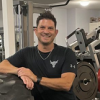Premier - Local Athletic Therapist
-
What Are Rehab Products
There are numerous products that can help with rehab if you are injured or pushing your body to the limits. Its important top get the right equipment for your particular need.
-
Home Equipment - Foam Roller
Foam rolling has gained popularity as a self-myofascial release technique, helping to improve muscle flexibility and reduce muscle tension. It can be particularly beneficial for athletes, individuals recovering from injuries, or those experiencing muscle tightness or discomfort.




